By Deniz Söğütlü
The Project was Featured at the Design United Exhibition within Dutch Design Week 2019
Introduction
One of the ways to attain sustainability is to extend the service life of products, in other words, consuming less products that eventually lead to less waste. In 2018, I approached Prof. Pieter Desmet with the intuition that service life can be extended by designing products that build sustainable emotional attachments with users. In order to apprehend how individuals experience positive emotions over time, the research was set off from a concept of emotional adaptation, introduced by psychologists in the early 70’s. Hedonic adaptation is known as “the observed tendency of humans to quickly return to a relatively stable level of happiness despite major positive or negative events or life changes”. (Brickman & Campbell) Hedonic adaptation may underlie the behaviour of cyclical consumption: when the adequate time has passed after a purchase, the individual eventually discards her product to acquire the new one, even if the former is still functional. For the first time, hedonic adaptation was investigated from a design perspective, by identifying the 8 design opportunities distilled from the fields of positive psychology (Sheldon & Lyubomirsky), industrial design (Jonathan Chapman, Ed Van Hinte, Donald Norman) and consumer research (Nicolao, Irwin, Goodman and Wang, Novemsky, Dhar).
Description
The project was carried out in four phases that are literature review, qualitative research, quantitative study, and prototyping. The final outcomes of the project are the design guidelines, experimental results and exploratory prototypes. After the literature review, qualitative methods were implemented in form of semi-structured interviews that required participants to bring 4 belongings that were particularly meaningful for them. Once the 8 product drivers were identified and verified, the third step was to assess their performances in real life purchases. Through an empirical study, the 8 previously identified drivers were successively tested in real life purchase scenarios, thanks to 60 participants who were asked to compile two rating forms over five weeks. The study was modelled following the instructions of the previous consumer researchers Van Boven and Gilovich (2003), Nicolao et al. (2009), and their designs were adapted to measure the effectiveness of the 8 product drivers in terms of satisfaction of participants from their products over time. The final phase is much like a synthesis of previous research, embodying the findings into material outputs. The 8 drivers were translated into product concepts, in order to assess to what extent they can be implemented in the design process.
Description and Visualisations
The design guidelines are formed by 8 product characteristics, that are referred to as product drivers throughout the project. These drivers which were demonstrated – through qualitative research – to be existent in products that were successful at creating long lasting emotional attachments with their owners. Instead, the experimental results were obtained through a short term longitudinal study carried out with 60 participants that had recently made a purchase. The results showed which product drivers sustain more well being. Meanwhile, the prototyping phase is an attempt to determine the extent to which the outcomes of the project can effectively be implemented in design practice. The category of timepieces was chosen in order to keep the prototypes fairly simple, yet with enough design freedom to express the different product characteristics. These concepts shall not be conceived or evaluated as commercial products as they constitute a narrative means of the project to a broader audience. Three concepts out of eight are visible below:
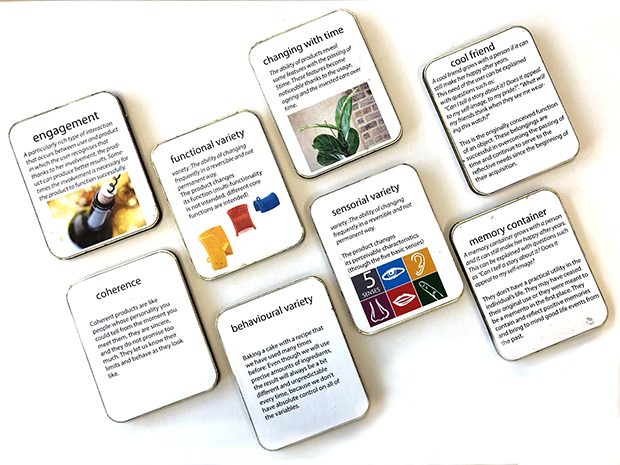
image 1: driver cards for qualitative research
3/8 Time to De-Fiction
product driver: Behavioural Variety is the ability to change behaviour by showing traits of unpredictability, though satisfying its core function.
Description: A cuckoo clock that makes a different sound/visual effect when it strikes every hour. ‘De-fictioning’ is a term used by J. Chapman and it refers to the consumption of the fiction of a product.
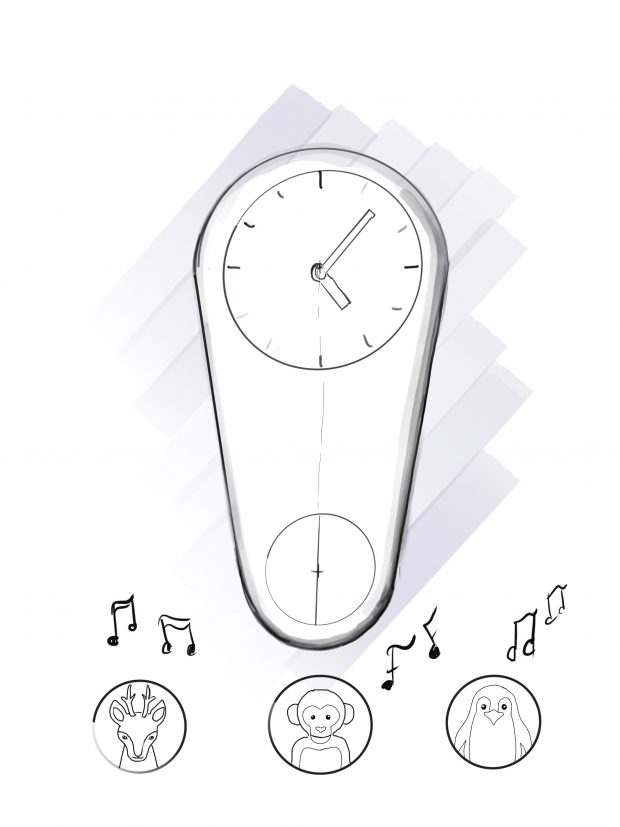
image 2: concept sketch Behavioural Variety
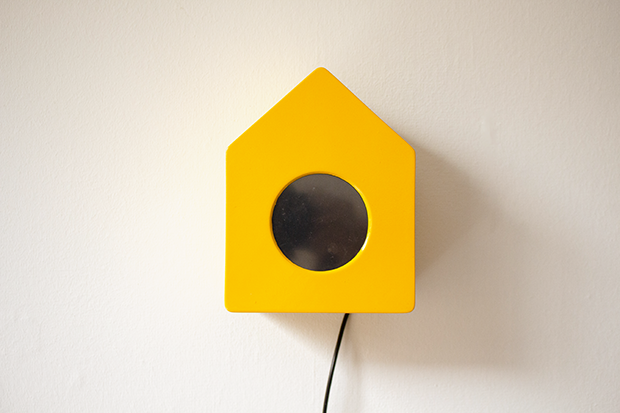
image 3: Behavioural Variety cuckoo clock
4/8 Time to Engage
product driver: Engagement is a particularly rich interaction that occurs between user and product in which the user recognises that her involvement, enables the product to produce better results.
Description : The user is required to make rotations with the four tools in order to wind the mechanism of this table clock, according to the degrees of rotation seen on the display. The winding leaves the user with a feeling of accomplishment and satisfaction.
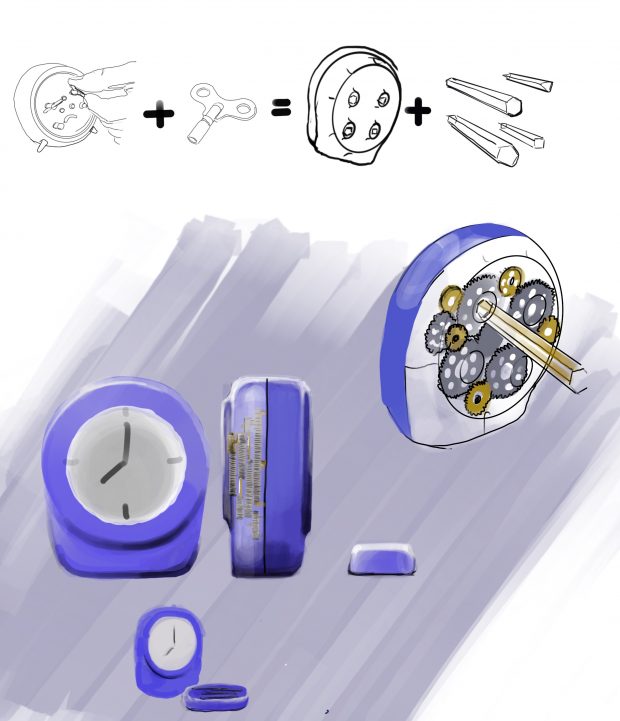
image 4: concept sketch Engagement
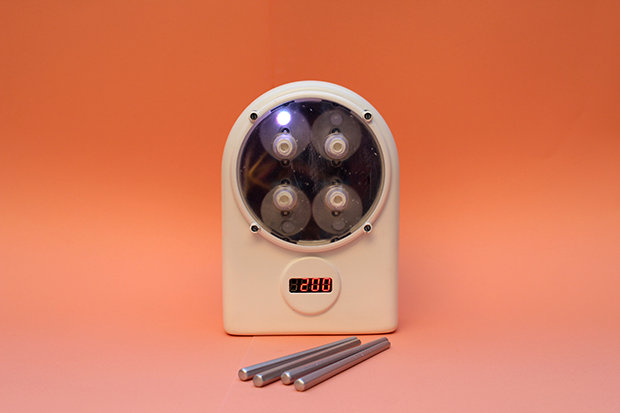
image 5: Engagement clock
5/8 Time for change
product driver: Changing with time is the ability of revealing features with the passing of time. These features become noticeable thanks to usage, ageing and the invested care over time.
Description : An hour glass that has a metallic coating inside it and through use, the sand creates friction on the interior and slowly peals off the layer of metallic coating. The coating wears off and mixes to the sand, changing also the colour of sand.
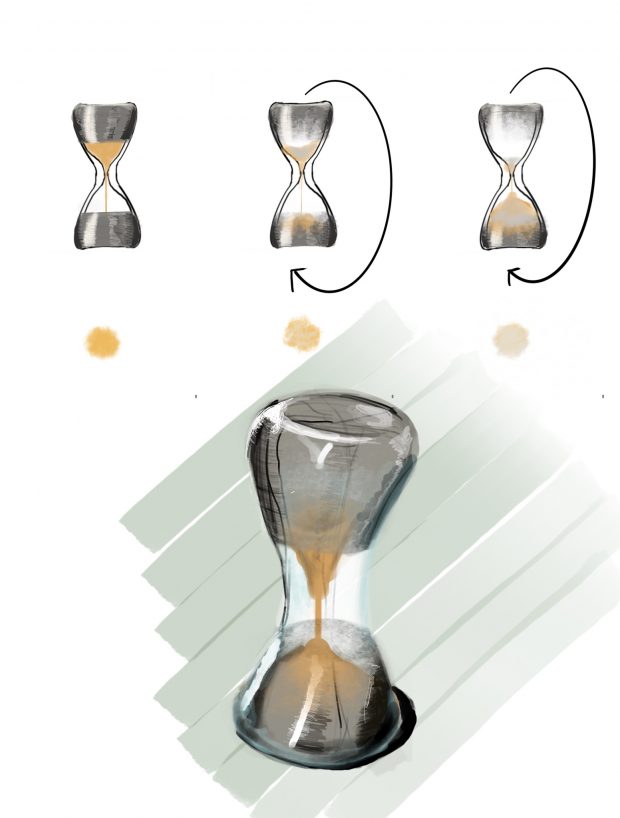
image 6: concept sketch Changing with Time
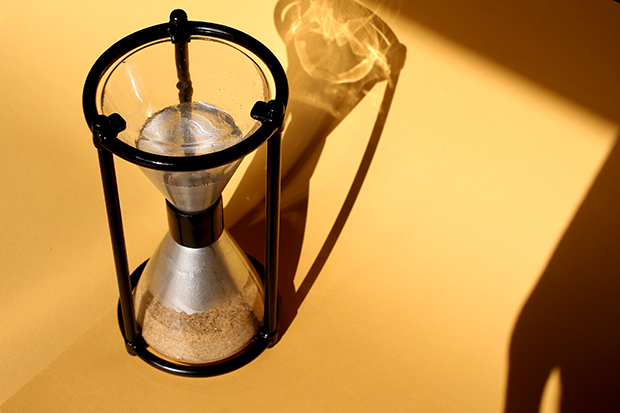
image 7: Changing with Time hourglass
References
Chapman, J.,(2015), Emotionally Durable Design : Objects, Experiences and Empathy, Taylor & Francis Ltd.
Nicolao, Irwin, Goodman (2009), “Happiness for Sale: Do Experiential Purchases Make Consumers Happier than Material Purchases?”, Journal of Consumer Research, Vol. 36, August 2009
Norman, D., (2004), Emotional Design: Why We Love (or Hate) Everyday Things, Basic Books, New York, (2004)
Lyubomirsky, S., (2007), The How of Happiness : a scientific approach to getting the life you want, The Pinguin Press, New York, (2008)
Sheldon, K.M., &Lyubomirsky, S. (2004), Achieving New Sustainable Happiness: Prospects, Practices, and Prescriptions. In A Linley & S. Joseph (Eds.), Positive psychology in practice (pp. 127-145). Hoboken, NJ: John Wiley&Sons.
Van Hinte, E., (1996), Eternally Yours, 010 Publishers
Jing Wang, Nathan Novemsky, and Ravi Dhar (2009). Anticipating Adaptation to Products. Journal of Consumer Research, Vol. 36, No. 2 (August 2009), pp. 149-159. The University of Chicago Press



